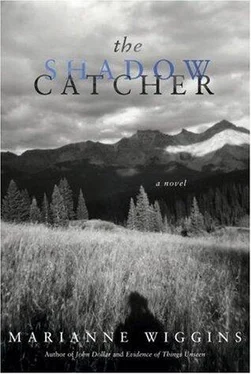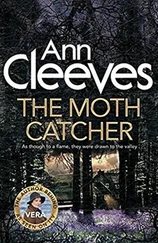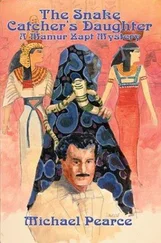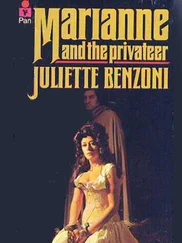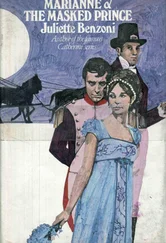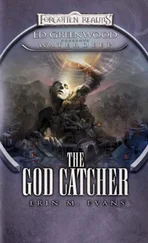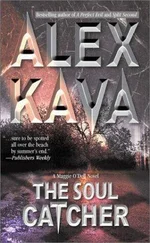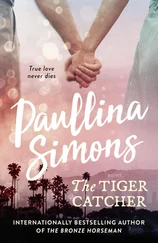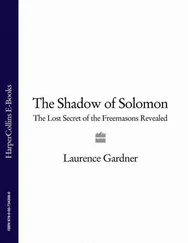Because life just throws those miracles our way, doesn’t it?
I take two Polaroids — the ones with Ann-Margret and Dean Martin — and slip them inside the Bible just as Lester presses his head against the screen outside and says, “You need to see this. Right away.”
I follow him along the ramp to Miss Mendoza’s door, at which he steps aside to let me enter, and my initial response is, “What is this place?”
A museum , it appears.
The layout is the same as in the former house, but larger, the walls have been pushed back but the relative dimensions are identical. In the living room, to the left, low bookshelves skirt the perimeter, every inch of shelf space filled with artifacts — Kachina dolls, reed baskets, clay pipes, beaded bags, black and red clay pottery, drums, carved fetishes. They radiate an inner life, each one of them, and the temptation is to take each treasure in hand — to touch — which may explain why the only times I’ve seen such items on display there’s a protective pane of glass between me and their powerful attraction.
On the floor and draped over the sofa are hand-woven rugs emblazoned in the geometric patterns of the Plains tribes, and in the center of the longest wall two beaded buckskin dresses hang from a carved pole festooned with leather fringe and feathers.
But what captures my gaze is the array, on every wall, living room and dining room, of framed black-and-white and gold-toned photographs.
These are Curtises , I breathe.
Not gravures, which are as common as salt and cheap to manufacture, over-produced by galleries for the gullible at a couple hundred dollars a pop. No, these are originals , hand tinted prints from Curtis’s glass plates, worth — I’m guessing — tens of thousands of dollars each.
Miss Mendoza zooms around the dining table, a coffee pot in hand, and tells us, “I don’ change a thin’ in here from time that I inherit”
“—you inherited all this?”
“This house, the one next door.”
Lester draws the bracelet and the headdress from his shoulder bag and sets them on the table. “I believe these must belong to you.”
She nods.
“Every now an’ then I sen’ Johnny out to sell some thin’s. When I need money.”
“My father made this bracelet,” Lester tells her. He shows her the jeweler’s mark that matches the twin one on his forearm.
“Then jou mus’ keep it.”
“Please, Miss Mendoza—”
“—Clarita.”
“Clarita. I don’t think you understand what this is worth.”
“—plenty more where it comes from.”
“But Miss Mendoza—” I begin.
“—Clarita.”
“Clarita. I’m no expert, but—”
“—you’re sitting on a fortune,” Lester volunteers.
“How did you — where did all this come from?” I ask her.
“—was Tio Rico’s. With el jefe . They live here.”
“— el jefe ?”
“Tio ’Uardo. They were, jou know, how jou say—?”
She crosses two fingers of one hand in front of us.
“— tight ?” I guess.
“—mens. Two mens. Tio Rico, hees my mother’s brother, she live over there, in the house I rent to Johnny. Her house, with me, after I am born. She cook an’ clean for thees house, an’ for all other house.” She draws a circle around the outside court with her outstretched hand. “She clean for all the boys.”
“—the boys?”
“Jou know — nightclub boys. Dancers. Very nice.”
I look out the window at the gingerbread fronts of the little houses on the courtyard and reason this was quite the community, in its hey day.
“But that doesn’t explain where all this—”
“It was jefe ’s. Tio ’Uardo’s.”
“ Ed -uardo?”
“— si .”
“Do you have a picture of this Eduardo ?”
She takes a scrapbook from the top drawer of the breakfront.
“Help jour selve. Chicita in the picture, she is me. Beautiful lady — Lupe, madre mio . Handsome man — Enrico, tio . Other man in how jou say las gafas —glasses? — that one ees Eduardo.” She points the wheelchair toward the living room. “I go get dress.”
She goes, and Lester and I page through the scrapbook. Someone kept it with a persnickety archival diligence and an unintentional comic flair for writing. “The Lovely Lupe in Her Floral Apron with Carne Asada” reads the caption under one snapshot of an attractive young woman posing with a platter of food decades ago in this very dining room. “Enrico, El Toreador! ” reads the quip beneath another picture of a handsome young Mexican man, shirtless, with a pair of garden shears outside this very house. There are pictures of groups of men assembled at an outdoor party in the court — pictures of what appear to be camping expeditions in the desert — pictures of a tent beside a stream where some sort of gold-extraction apparatus had been set up — pictures taken in the bare Nevada mountains — and then a picture whose caption reads, “Our First Gold Nugget,” where the handsome Mexican man holds a nugget of gold in his palm while he stares into the eyes of an older man in glasses, who stares back at him, adoringly. This is followed by a number of pictures taken through the years where the two men, never actually touching, pose in such a way, unguarded, that one, even after all these years, can hardly fail to sense their erotic charge nor fail to see that they’re in love.
“— Curtis ?” Lester asks.
I nod.
“‘The Missing Years,’” I can’t help saying, fondly.
“You aren’t surprised?”
“I might have guessed. But I never saw the evidence. These pictures were taken in the 1930’s, 40’s. Something must have changed between Edward and Enrico.”
“Maybe Enrico died…”
“…because in the late 40’s he went back to California to be with his four kids.”
“Maybe he missed them.”
“He had never missed them before.”
I recall the photograph of Edward I had found where he’s posing with his children, the only one that I could find in which he’s halfway smiling. Beth is in an eye-popping apron, Florence in an artless off-the-rack frock, and only Katherine and Harold look as if they dressed expecting there might be someone with a camera present. Edward, out of character, looks disheveled, down at heel, as if his diminishing eyesight is finally taking its toll on his ability to see a bright horizon. This is us when we are happy the photograph is meant to say. But when I think of Edward in that picture, I have to say I’m not convinced.
Clarita reappears — dressed, her hair combed — and tells us she is ready.
“Clarita,” I ask. “Did Enrico die?”
“—sure, I already tol’ jou he is die.”
“No, I mean: why did Eduardo leave these things behind?”
“…worth a fortune,” Lester adds.
“He leave them for Enrico.”
“Enrico was still alive when Eduardo left?”
“ Si —he go. Like that.” She snaps her fingers. “—break Enrico, in hees heart.”
“He left his wife in the same way.” I snap my fingers.
“—he has wife?”
“—and four children.”
“I don’ understan’,” she says.
I look at the pictures of Edward and Enrico again, This is us, they say, when we are happy.
But it was the 40s.
And he had once had the admiration and respect of Theodore Roosevelt and J.P. Morgan.
And he was working on his memoirs.
As ever, he was working on his MYTH.
When you’ve immortalized great chiefs of state, tribal chiefs and Presidents, when you’ve broken bread with Red Cloud, T.R. and Geronimo, what does your private life have to do with the way you want your name to be remembered?
Читать дальше
